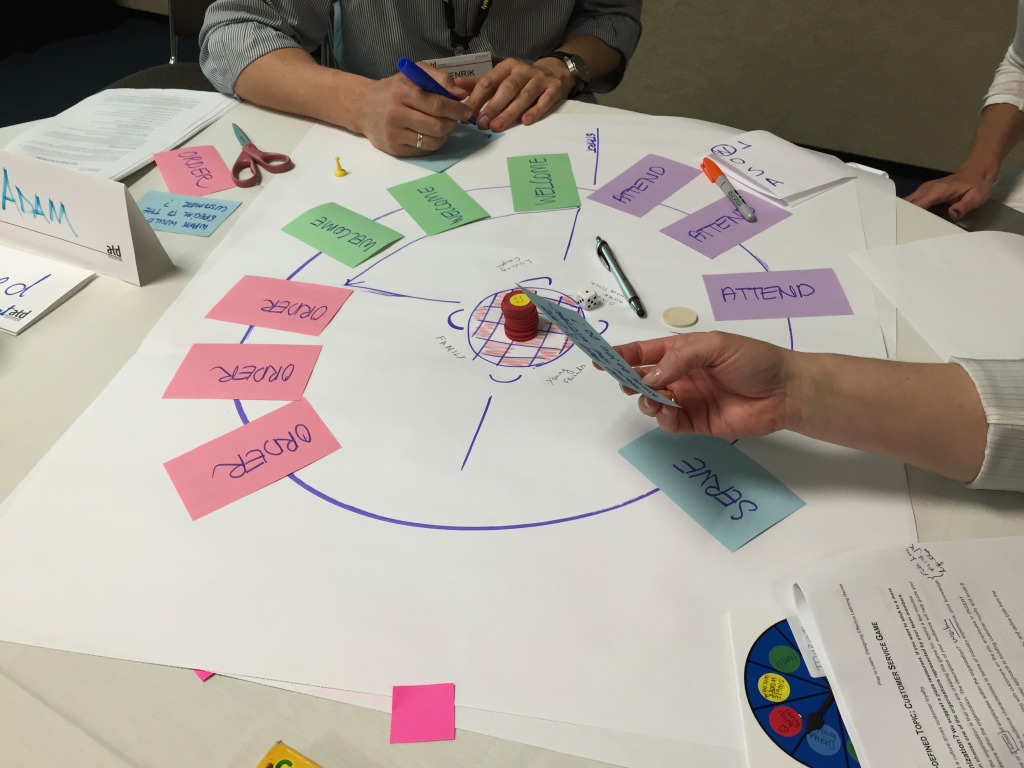2015 Reflections on Games and Gamification for Learning
It seems to me that the year 2015 was the year that gamification got “real” for learning and development. It still has a way to go but a number of instances seem to point to a more concrete and focused effort on making gamification work in learning and development and the spreading of the concept.

Gamification is Bringing Serious Game-Based Learning and Simulation-Based Learning Along for the Ride
The focus on game elements and gamification has brought a resurgence to “game-based learning” and “simulation-based learning.In fact, according to a study conducted by Ambient Insights in 2014 the following is true of these types of learning tools:
- The global market for simulation based-learning is projected to grow to 7.1 billion USD by 2018
- The global market for gamification is projected to grow to USD 5.5 billion in 2018
<:I>Games-based learning is projected to grow to USD 2.4 billion by 2018
Gamification and Game-based Learning are International Phenomenons
I am often asked if game-based learning or gamification is only “effective” in one geographical area or another or for one type of person or another. The truth is interactive and engagement are universal. The use of gamification or games does not need to be limited, anyone, in any culture can learn from games. And the idea of game-based learning and gamification is spreading rapidly around the world in learning and development circles.
I spent a wonderful time presenting on gamification and learning about Gamification in China and my book “The Gamification of Learning and Instruction” was translated into Chinese and the follow-on fieldbook will be available in early 2016. There is a great deal of interest in gamification in China and it seems to be growing. Here are my reflections from my trip to China.
–Recap ATD China Summit 2015
–Games, Gamification & Learning in China
Additionally, in 2016, I’ll be working internationally with a gamification company in Romania, creating an online workshop for a company in Mexico, keynoting at the University of Wisconsin-Madison’s Distance Teaching & Learning Conference and at the United States Distance Learning Association Conference as well as traveling to both Switzerland and Brussels to speak about games, gamification and innovations in learning. Gamification and games, from my perspective, are universally and internationally attractive and effective.
Gamification is Getting More Serious
I spent a wonderful Sunday this year attending a gamification summit held at the Wharton School at the University of Pennsylvania. The event was titled “Gameful Approaches to Motivation and Engagement” with the hashtag #WhartonGAME and it was attended by many of the most influential thought-leaders in both the academic and practitioner space in the arena of gamification (Gameful Approaches to Motivation & Engagement: Recap of #WhartonGame Summit).
The one thing that struck me the most at the summit was the seriousness with which the concept of gamification is being examined. Many intelligent people in corporations, academic institutes and government organizations are trying really hard to figure out this gamification concept and make it work at both the tactical and strategic levels.
Additionally, my speaking at Masie’s Learning2015 also highlights the fact that gamification is reaching into the minds of Chief Learning Officers and other high level executives in the learning and development arena. Gamification and game-based learning are being seriously considered as tools for increasing engagement and learning retention. Here is an article I wrote about the reasons game-based learning should matter to organizations.
Getting Gamification and Game-based Learning Right is Tough
With an increasing frequency, I am being asked to assist with “gamification” or game-based learning that has gone wrong or is not meeting it’s goals. An app is built and doesn’t have the “stickiness” that was expected or no one is using the tool the way we had planned. Or people only play the game-based learning module once or we have too many gamification or learning technologies and don’t really understand how they all fit together.
An important element in this interactive learning is to get it right. When a lecture goes wrong, learners moan and groan under their breath but it’s typically not a spectacular crash and burn. It’s relatively inexpensive to create a lecture and if the learners really need to know the content and it’s delivered poorly, they tend to figure it out. A game or a gamification event, when they fail…fail big. Lots of expenses, people sticking their neck out to vouch for this type of learning. The planning, approach and execution need to be handled carefully.
I spoke a little about this in a webinar I did for Axonify called Practical Gamification and in an article I wrote for ATD called 10 Best Practices for Implementing Gamification
Games and Gamification Being Used for Recruiting and Selection of Employees
A number of companies are using games and gamification to help select employees. Here is an article I contributed to about the phenomenon: Win a game, land a job? Coding contests help recruit engineers and a blog post I wrote on the subject Using Games and Gamification for Employee Screening.
The concept is picking up momentum with companies like CodeFights, Knack and Lytmus. There are some pitfalls with the process so you have to make sure that you are using it correctly and it should not be a substitute for a portfolio or interview but it does add another data point to the decision process.
Final Thoughts
Gamification and game-based learning when done correctly have the potential to make a major impact on learning. These techniques can engage learners and help make learning “stick” but the design, development and implementation of these tools are not easy. In the upcoming year, I see more of a focus on make these tools work for learning and an increase in international interest in games and gamification for learning.
Resources
If you’d like to learn more about gamification in 2016 here are some resources you may find helpful.
- Videos/Class
First here is a link to a video I did as part of a course on Gamification for Lynda.com
You can get a free 10 day trial by clicking on the image below.
- Articles of Interest:
10 Best Practices for Implementing Gamification
Games, Gamification, and the Quest for Learner Engagement.
Gamification Myths Debunked: How To Sidestep Failure And Boost Employee Learning
8 Gamification of Learning Mistakes You Need to Avoid
- Books:
Visit www.karlkapp.com for more information on gamification and learning.
Posted in: Games, Gamification
Leave a Comment (0) ↓
